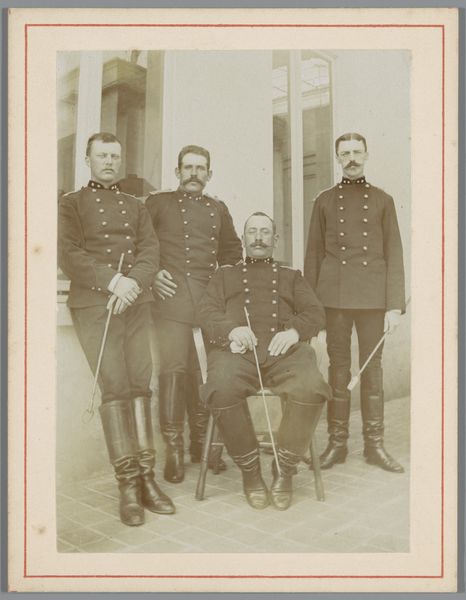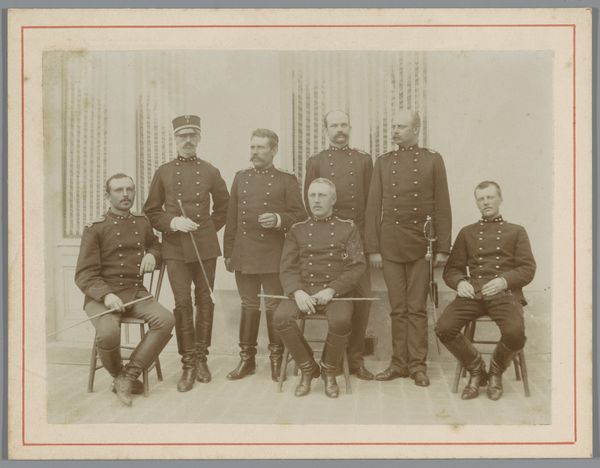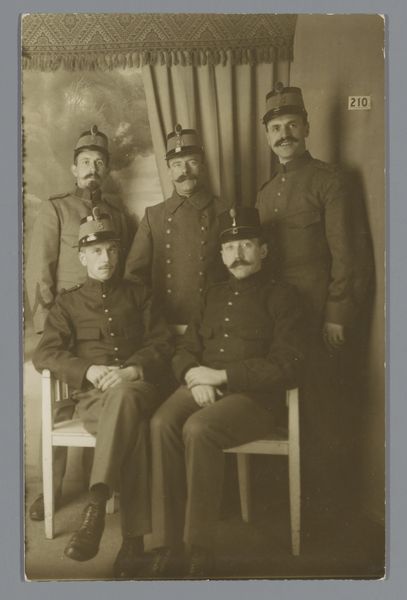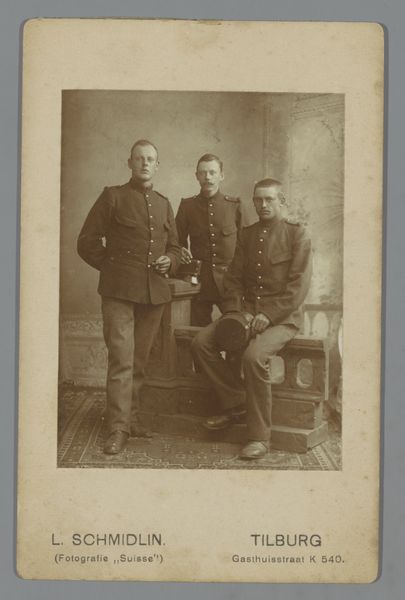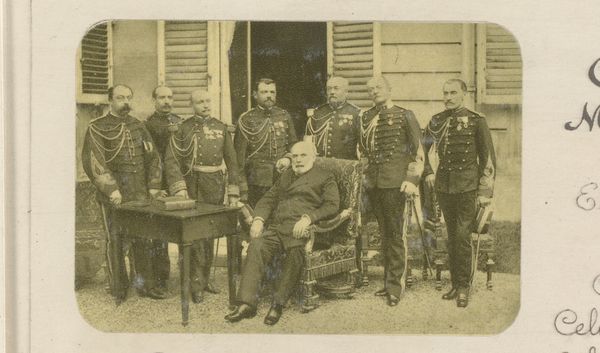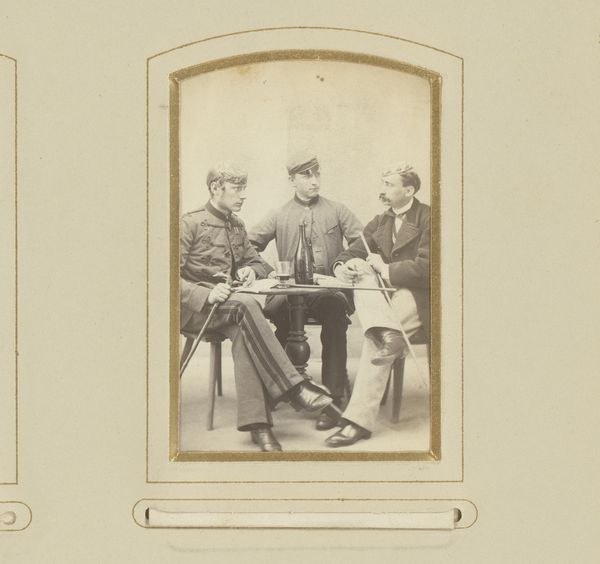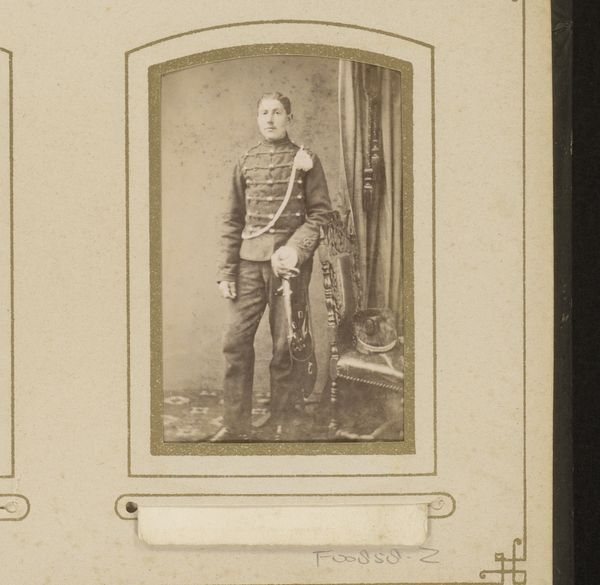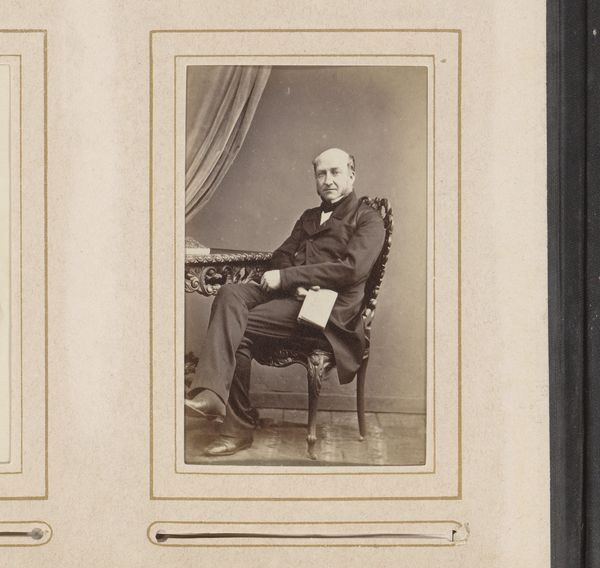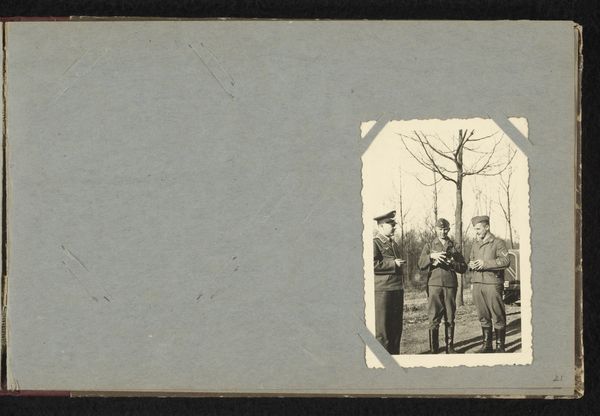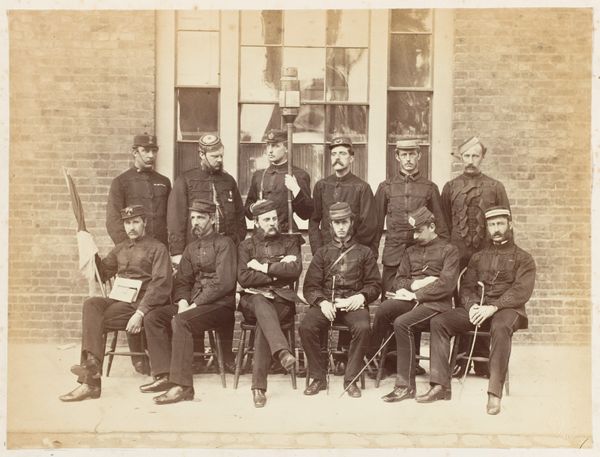
photography, gelatin-silver-print
#
photography
#
historical fashion
#
group-portraits
#
gelatin-silver-print
#
history-painting
#
academic-art
#
realism
Dimensions: height 99 mm, width 129 mm
Copyright: Rijks Museum: Open Domain
Editor: Here we have "Groepsportret van drie onbekende militairen," or "Group Portrait of Three Unknown Soldiers" by Karel Alexander Enklaar, from 1892, created using a gelatin silver print. It feels incredibly staged and formal, almost like a tableau. What strikes you when you look at this? Curator: This photograph, like so many from the late 19th century, presents a constructed vision of masculinity and military authority. I see more than just three men in uniforms; I see a representation carefully crafted to project power and instill a sense of national pride, even duty. Think about the social and political climate of the time – rising nationalism, colonial expansion. How might this image function within that context? Editor: I guess the stoic expressions and rigid posture would be part of that image building? They definitely don’t seem approachable. Curator: Precisely. These weren't candid shots, they were carefully orchestrated. What about the hidden aspects of military life, the brutal realities of conflict and subjugation of colonized people? This image, like much propaganda, obscures uncomfortable truths behind a facade of strength and order. What narratives are *not* being told here, and *whose* voices are silenced by this image? Editor: That's a perspective I hadn’t considered. I was focused on the aesthetic. Curator: And that’s a valuable entry point, but understanding the power dynamics at play is crucial. What do you think about their anonymity, being called "unknown"? What statement could Enklaar have been trying to do? Editor: So, we need to consider the photograph not just as a portrait, but as a historical document that reveals societal values and, perhaps more importantly, conceals the complex realities of its time. Now, their being “unknown” feels more like erasing their personal history to reinforce military structure. It's a bit chilling! Curator: Exactly. It reminds us that visual culture always operates within a larger framework of power, ideology, and representation.
Comments
No comments
Be the first to comment and join the conversation on the ultimate creative platform.
